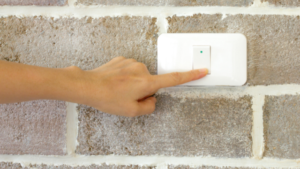The Advantages of Parking Lot Lighting
The Advantages of Parking Lot Lighting
By Charlotte Bonita – Commercial Lighting Blogger
There are a number of advantages to parking lot lighting than you might have initially thought. These can come in the form of design, professionalism, and security. Just as installing lighting will have advantages in the safety of pedestrians, it can also include advances in design, professional status, and attraction of a business. Have a look at the following pros of parking lot lighting, and why it is something you should consider.
Protecting Your Business
Installing parking lot lighting protects your business in terms of the security and safety of your business’s assets. If your business has an unlit parking lot, then it’s more likely to attract unwanted attention from thieves and burglars who are looking to stay out of sight before potentially performing a break-in.
If a building becomes attractive to the wrong kind of audience, expensive computers and other equipment are at stake, and there is no guarantee, despite security systems, that robbery will not be attempted during the late hours of the night.
While it is advisable to install security systems or cameras alongside parking lot lighting to ensure the highest level of security and prevention of risks, parking lot lighting is a factor that will help towards lowering the risk of criminal activities.

Protecting Pedestrians
Installing lighting into a parking lot also improves the safety of on goers and pedestrians. While a dark parking lot can be a perfect lurking spot for criminals and thieves, a well-lit-up area creates a safer environment for passers-by and local pedestrians.
Parking lot lighting also creates a safer environment for employees who might be working late or leaving their car in the parking lot. It gets dark early in winter and fall, which means staff who might be walking to their car on their way home are far more likely to get robbed than if the area was completely illuminated.
It is also a safety precaution in terms of driving in the pitch-black darkness, as pulling out of a parking space is a lot harder in this case. To prevent any unnecessary accidents, installing parking lot lighting can help.
Design
The installments of lights in a parking lot can not only improve the safety and security of the area and your business’s assets but can also create a better sense of environment and design. Lighting will illuminate the parking lot as well as the building where the business is present, making it stand out and look more presentable.

Professionalism
Installing parking lot lighting gives the building and business a higher professional status, making it appear well kitted out and ready for any clients who might come to visit.
Businesses that don’t have parking lot lighting installed will appear less practical than those who do, and clients visiting for meetings will be safer if the area is lit.
Overall, parking lot lighting might seem like an extra mile to go, but in fact, the extra mile you go will heighten the level of safety, security, design, and professionalism a business already possesses.
If you are interested in upgrading any lighting design for your business you need to first contact the professionals at ESP! We will help you from there!






 Power down computers and other office equipment at the end of the day. If computers are not being used through the hours when your staff isn’t working, have your team be in the habit of shutting them down before they leave. Turning off and unplugging as many devices as possible at the end of the day is a simple way to cut back. This includes energy efficient coffee makers, toasters, and similar appliances.
Power down computers and other office equipment at the end of the day. If computers are not being used through the hours when your staff isn’t working, have your team be in the habit of shutting them down before they leave. Turning off and unplugging as many devices as possible at the end of the day is a simple way to cut back. This includes energy efficient coffee makers, toasters, and similar appliances.